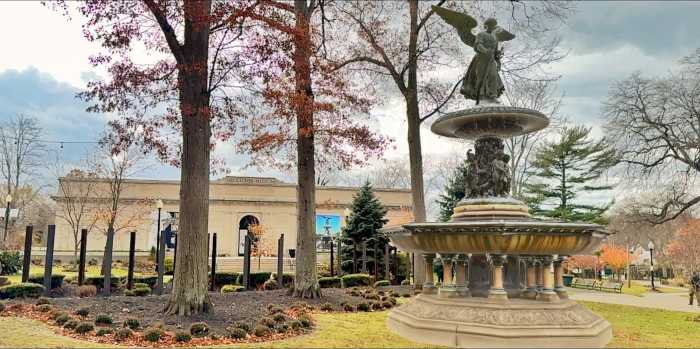Car Free Day LI marked 20 years of public service as several transit leaders from across Long Island gathered to showcase regional progress and future mobility visions.
Car Free Day is an international event celebrated every September in more than 3,100 cities in over 50 countries around the world. Several Nassau County municipalities have promoted this year’s annual Car Free Day LI, which will be held on Monday, Sept. 22.
The observance encourages people to drive less and get around through transit, bicycling, walking, vanpooling and also telework for people who can work from home.
Robert Prezant, the president of Farmingdale State College, who hosted the event on Wednesday, Sept. 17, began by asking the audience who drove to the campus. Prezant had.
“At a time when the impact of climate change grows year after year after year, it’s important that we have periodic reminders that we can do something to change the trajectory that climate change will otherwise bring us,” he said.
Prezant said the school is committed to advancing a total-green agenda, including campus shuttles, a dining hall reuse system for to-go meals and an ambassador program for sustainable mobility.
He said roughly 40% of students use the Long Island Railroad to get to campus.

Neville Perkins, the executive director of engineering and operational readiness for the LIRR, said that significant investments have been made to modernize the region’s railroad system over the past few years, and those projects have paid dividends.
“We know full well that the railroad remains an active and attractive solution, and it will keep the industrial engine of Long Island churning,” he said. “Let us keep the momentum going in support of the one planet that we have.”
Perkins said the more people who take the train, the fewer carbon emissions that are put into the atmosphere.
Elisa Picca, the chief deputy commissioner in the Suffolk County Department of Economic Development and Planning, said that public transportation improvements have greatly impacted Suffolk.
She said the renovations to Grand Central Terminal in Manhattan and the growth of public busing have encouraged people to use public transit.
Picca mentioned connectivity possibilities between many of Suffolk County’s main LIRR lines, but that modernization is required to continue to push the envelope.
“Suffolk County needs more,” she said. “We need to see additional railroad investments so that all of Suffolk County can benefit from these improvements.”
Glen Cove Mayor Pamela Panzenbeck also highlighted her city’s public transportation, including the city loop, NICE buses, a senior center shuttle, medical transit service and three train stations. The mayor also said there are sidewalks and crossings in the city’s downtown and most neighborhoods.
“One of the most difficult things is to get people to ride the loop bus, but once they do, they seem to like it,” Panzenbeck said.
The mayor said that “Glen Cove is on an absolute roll,” and that future projects are also slated to improve the city’s mobility as it aims to promote car-free lifestyles.
Erika Richards, the chief marketing officer for NICE Bus, said ridership in Nassau County has grown beyond pandemic levels, but that budget constraints have made it difficult to celebrate the increase in public reliance on the bus system.
“It’s important that we mobilize our citizens and get the message to our local lawmakers about how important our public transit funding is,” she said.
Elizabeth Kenjesky, who works in sustainability and resource management at Northwell Health, the largest private employer in the state, said the hospital group plans to be net zero by 2050.
“We believe all communities deserve cleaner transportation options and are encouraged by the ongoing work that is being done in this area,” she said.
Eric Alexander, the executive director of Vision Long Island, said that there is still work to be done, but that advocacy has put Long Island on a
He highlighted positive changes that have occurred on Long Island, including the approval of over 19,000 transit-oriented development units in the past two decades, and that 60% of walking audits performed on dangerous areas resulted in local changes to roads.
Martin Buckman, an advocate for LI Greenway, discussed the logistics of the planned 175-mile multi-use trail network, which would run from New York City to Montauk and promote tourism and sustainable development in the region.
He said that multiple phases of the trail are expected to start construction as soon as 2026, and that constant advocacy has led to the project’s development.
Buckman, who said he is an avid bicyclist himself, said his favorite way to ride is from place to place where he doesn’t need to use a car.
Multiple students from Adelphi University and Farmingdale State College also spoke at the event, saying that they are working towards a cleaner tomorrow.
“It gives a small glimpse of a different future,” one of the students said about Car Free Day LI.




































